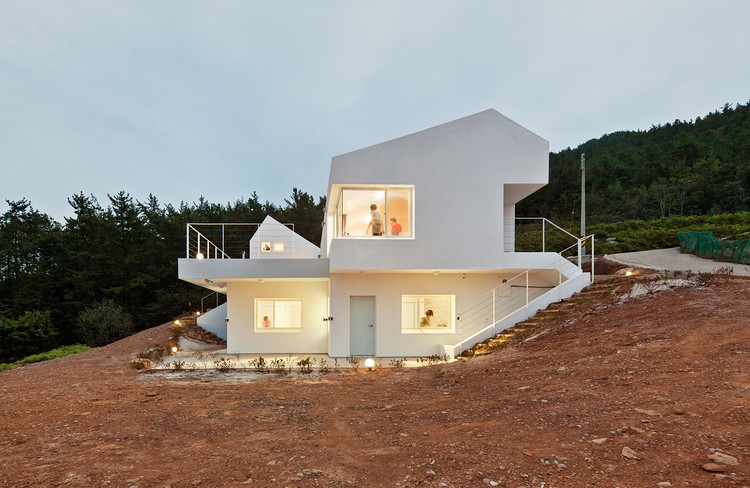
-
Architects: Lifethings
- Area: 230 m²
- Year: 2012
-
Photographs:Kyungsub Shin
-
Contractor: Chaeheon Construction, Yim Hyun Chul
-
Structural Engineering: The Kujo, Park Byung-soon

Text description provided by the architects. Beginning of this project dates back to a personal experience encountered by the client, Dr. Jung Soik, a cultural curator and architectural educator. Dr. Jung was studying in Milan, Italy, when she witnessed a local truck-drivers’ union strike against the rocketing oil price. Three days into the strike, Dr. Jung found herself unable to find fresh groceries in the city. This experience brought her attention to the vulnerability of various systems our everyday lives rely on. She began to imagine herself one day building a self-sufficient community. Sosoljip is Dr. Jung’s first step towards her dream.

Dr. Jung commissioned Lifethingsto build her net zero energy house. Yang Soo-in is an architect and public artist practicing in Korea and in the United States. Yang visited the fishing and farming village, four hours south of Seoul, more than 40 times and kept a daily construction blog during the project.

The client and the architect wanted Sosoljip to be based on common sense in its design, construction, and budget. This 230 square meter house, which includes photovoltaic panels, solar heat collection tubes, wood burning boiler, four kitchens and four bathrooms was completed with 284,000 USD. Keeping the construction cost reasonable was very important for the project not because of budget limitations per se, but because Dr. Jung and Yang wanted the project to be a proof that it is possible to construct an environmentally conscious house including renewable energy production with a modest budget.

The client and her parents live in this house, which consists of three flexible spaces: the client’s space, her parents’ space, and Bed and Breakfast space. The main mass includes the parents’ living room, bedroom, kitchen and dining space. The client’s space is independent, yet connected to the main mass through a porch. It is a large studio with private living space on the mezzanine level. The studio serves a dual purpose as a library and a classroom for architecture workshops she runs. Bed and Breakfast functions as a buffer for the family’s sudden move from Seoul, where the family have lived all their lives, to Namhae, a remote countryside village. They will operate a B&B as well as invite family and friends. The client’s younger sister’s family, who still lives in Italy, will also spend a few months in Sosoljip every year.

Taking advantage of the village’s characteristic landscape, stepped agricultural fields, bed and breakfast rooms are placed on the lower level of the house and the family space is on the level above, both of which are directly accessible from outside. The parents’ space is connected to B&B space through stairs, which allows the B&B rooms to function as extra bedrooms. The two B&B rooms share a flexible wall, which allows the space to be a large single room whenever desired. Roof of the B&B becomes a garden that opens up to the magnificent view of the sea before the client’s room.

The upper level is a long mass that runs east-west which shifts south-north to seperate the client’s space. The roof is sloped at an angle to receive best sun exposure year around and sized for the 3KW photovoltaic panels and solar heat collection tubes to fit. Wood-burning boiler is the secondary heat source to avoid fossil fuel usage. Windows are placed to facilitate easy cross ventilation and carefully sized to minimize heat loss.









































